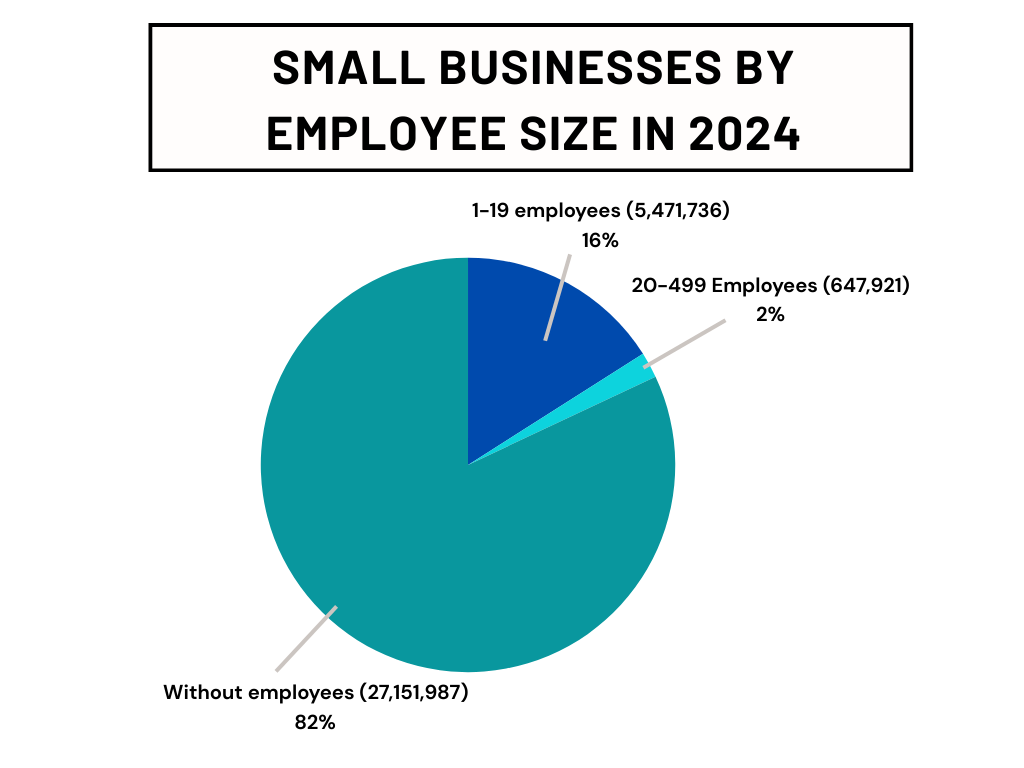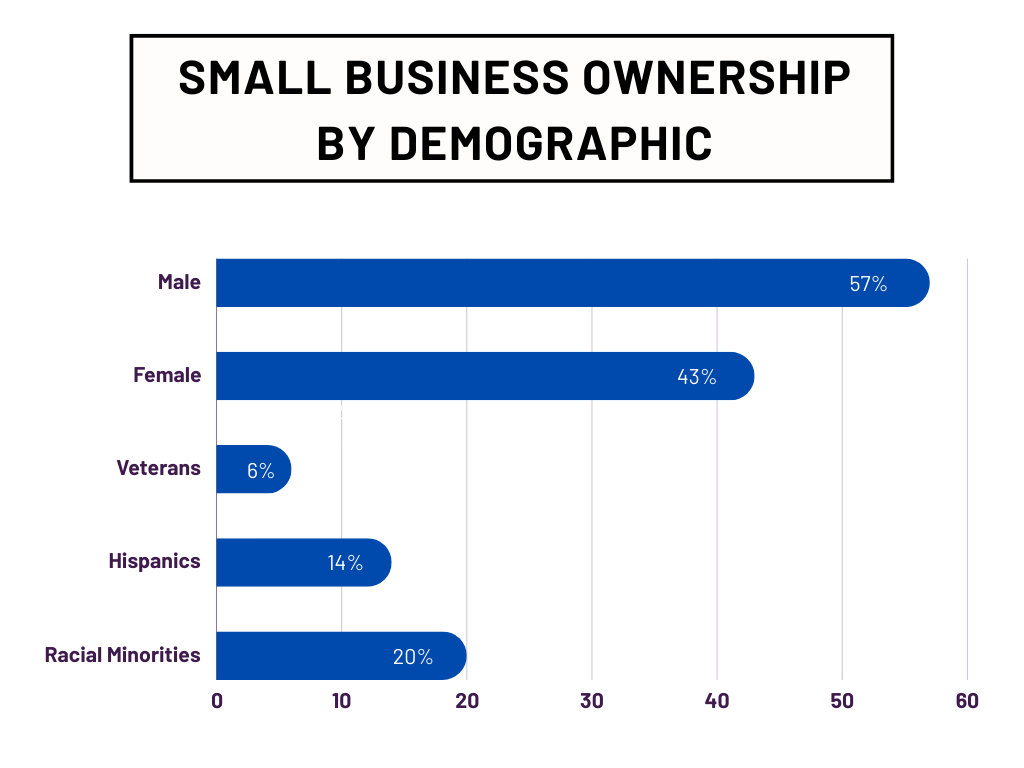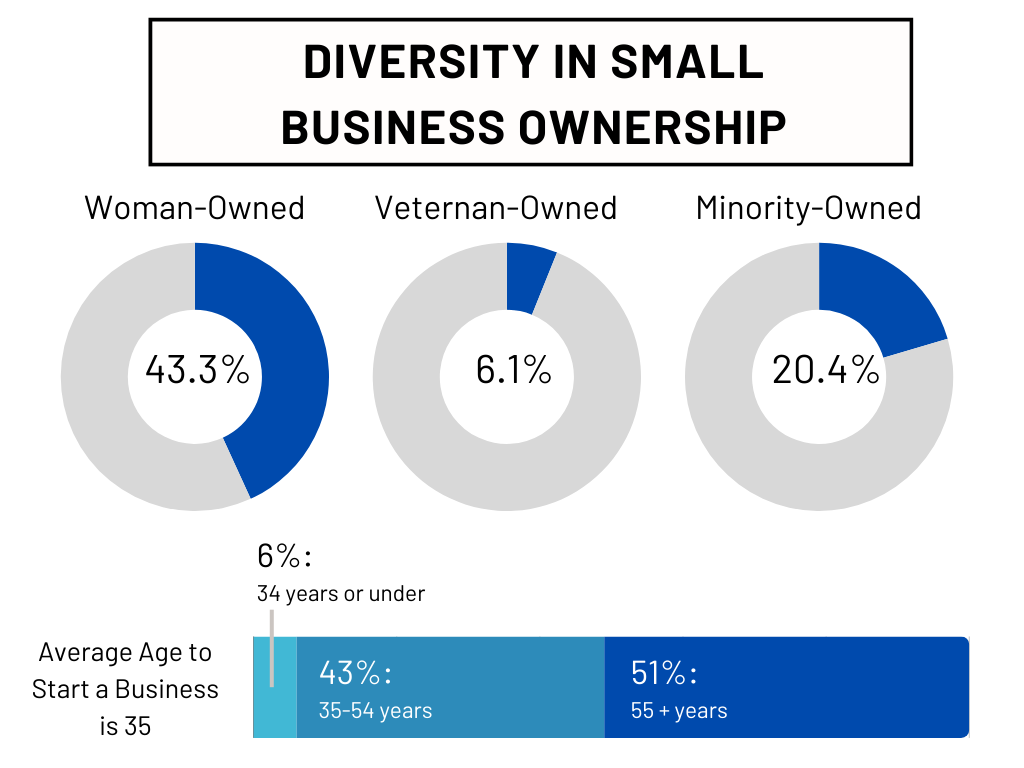Chapter 6: Entrepreneurship and the Economy
Small Business Defined
Because small businesses are typically the entry point for entrepreneurs as they develop their ideas and build a customer base (Business Employment Dynamic, 2016), we will look deeper into the economic impact that small businesses have on our economy and communities (OpenStax, 2020).
In Chapter 1 we defined a small business owner as someone who starts a business that already has an existing business model. The Small Business Administration (SBA) established size standards to define whether a business entity is small and, therefore, eligible for government programs and preferences that are reserved for “small businesses.” Size standards are based on the types of economic activity or industry, generally matched to the North American Industry Classification System (NAICS) (U.S. Small Business Administration, 2024). For purposes of this chapter, we will use the simplified Small Business Administration (SBA) definition: A for-profit entity with fewer than 500 employees (U.S. Small Business Administration, 2021).
So, how do small businesses impact our economy?
Small Business Impact
Today, there are over 33.2 million small businesses in the United States, making up 99.9% of all firms (U.S. Small Business Administration, 2023). Figure 6.1 shows the breakdown of small businesses by their employee size(OpenStax, 2020). There are 20,868 large businesses, a number much smaller than the total amount of small businesses in the US (U.S. Small Business Administration, 2024). Figure 6.1 shows the breakdown of small businesses by their size. According to the Bureau of Labor Statistics, entrepreneurs started 1,054,052 new businesses in the year ending March 2023 (Table 5. Number of Private Sector Establishments by age, n.d.).

From 1995 to 2021, small businesses created 17.3 million net new jobs while large businesses created 10.3 million. Even though the majority of small businesses operate without any employees, there is still a sizable number of small businesses that do employ staff (Main, 2024). Small businesses have accounted for 62.7% of net new job creation since 1995. These statistics were volatile in 2020, with a loss of over 15 million jobs in in the second quarter of 2020. Over 8.6 million of these job losses were small business job losses. However, small business employment grew quickly after the COVID-19 recession (U.S. Small Business Administration, 2023).
Small businesses not only create jobs but also contribute to local economies by reinvesting paychecks and taxes, supporting new businesses, and improving public services. Even with a few employees, a small business can transform a community by generating economic growth where there was none before (Rowinski, 2022).
On average, small businesses offer competitive wages, averaging $30.42 per hour, translating to an annual income of $63,000 (Ferguson, 2024).
Small Business Demographics
Despite males still owning most small businesses, females now own 43.4%, reflecting progress toward gender equality in entrepreneurship. Racial minorities own 20.4% of small businesses, including 14.5% by Hispanics, while veterans own 6.1%, contributing diverse perspectives to the U.S. economy (Main, 2024), as shown in Figures 6.2 and 6.3.

Pause and Reflect
- How do small businesses influence local economies?
- What are some specific examples of their impact on your community?
Entrepreneurship Data and Resources
The Kauffman Foundation
One of the best sources to track U.S. entrepreneurial growth activity is the Ewing Marion Kauffman Foundation. The Kauffman Foundation is among the largest private foundations in the country, with an asset base of approximately $2.7 billion, and focuses on projects that encourage entrepreneurship and support education through grants and research activities. They distributed over $125 million in grants in 2022 (McCann, 2023).
The Kauffman Foundation supports new business creation in the United States through two research programs. The annual Kauffman Index of Entrepreneurship series measures and interprets indicators of U.S. entrepreneurial activity at the national, state, and metropolitan level. The foundation also contributes to the cost of the Annual Survey of Entrepreneurs (ASE), which is a public–private partnership between the foundation, the U.S. Census Bureau, and the Minority Business Development Agency. The ASE provides annual data on select economic and demographic characteristics of employer businesses and their owners by gender, ethnicity, race, and veteran status.
The Kauffman Index of Entrepreneurship series is an umbrella of annual reports that measures how people and businesses contribute to America’s overall economy. What is unique about the Kauffman reports is that the indexes don’t focus on only inputs (as most small-business reporting has been done in the past); it reports primarily on entrepreneurial outputs—the actual results of entrepreneurial activity, such as new companies, business density, and growth rates. The reports also include comprehensive, interactive data visualizations that enable users to slice and dice a myriad of data nationally, at the state level, and for the 40 largest metropolitan areas.
You can find out more by visiting the Ewing Marion Kauffman Foundation web page.
US Chamber of Commerce
The U.S. Chamber of Commerce produces detailed and accessible analyses of economic data and indicators to assist business leaders and policymakers in making informed decisions, competing globally, and driving growth. They provide economic insights through reports, data centers, blogs, and indices. Created by their Data Products & Insights Team, which comprises policy experts, analysts, designers, and digital producers, this work delivers comprehensive quantitative snapshots of various business sectors and topics.
You can find out more by visiting the U.S. Chamber of Commerce web page.
Small Business Administration (SBA)
The SBA puts out an Entrepreneurial Development Impact Report that studies the impact the SBA has on their clients through the services offered. They also offer access to datasets and provide links to other datasets for entrepreneurs to use.
Through its core lending programs, the SBA provided $44.8 billion in funding to small businesses in fiscal year 2021, issuing over 61,000 loans (U.S. Small Business Administration, 2021).
Key Takeaways
- Small businesses serve as the entry point for entrepreneurs, helping them develop ideas and build customer bases, and they significantly impact local economies by creating new jobs and reinvesting in communities.
- The Small Business Administration (SBA) defines a small business as a for-profit entity with fewer than 500 employees, making these businesses eligible for various government programs and preferences.
- Small businesses comprise 99.9% of all firms in the United States, contributing to substantial job creation, with 17.3 million net new jobs generated between 1995 and 2021.
- Despite challenges like the COVID-19 recession, small businesses rebounded quickly, demonstrating their resilience and importance to economic recovery.
- Small businesses pay competitive wages, with an average hourly rate of $30.42, which equates to an annual income of $63,000.
- There is a growing diversity in small business ownership, with 43.4% owned by females, 20.4% by racial minorities (including 14.5% by Hispanics), and 6.1% by veterans, each contributing unique perspectives to the economy.
- Hispanic-owned businesses alone pay over $100 billion annually in payroll to their 1 million workers.
- The Kauffman Foundation, the U.S. Chamber of Commerce, and the SBA provide valuable resources, research, and data that support entrepreneurship and inform policymakers and business leaders, helping drive growth and economic competitiveness.


